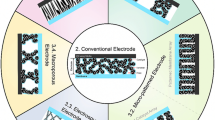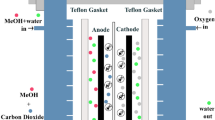Abstract
In relation to the demand for asymmetric porous hollow fiber membranes to be used in gas–liquid membrane contactors designed for operation in organic media, polysulfone membranes of this type have been prepared and subsequently modified to impart oleophobic properties to their surface. The structure and properties of the membranes have been characterized using various techniques, such as optical and scanning electron microscopy, and by measuring contact angles and the permeability of helium, carbon dioxide, and hexane. The surface properties of the membranes have been modified by etching with a mixture of hydrogen peroxide and sulfuric acid or coating with a perfluorinated acrylic copolymer. In the latter case, modified membrane samples have shown a significant reduction in wettability with both water and organic liquids. The hexane permeability data indicate the absence of hexane flow through the membrane modified with perfluorinated acrylic copolymer until a gauge pressure of about 1 atm. The results of the study lead to the conclusion that these membranes can find use in gas–liquid membrane contactors, e.g., for the removal of dissolved gases from liquid hydrocarbons.
Similar content being viewed by others
References
S. Shen, S. E. Kentish, and G. W. Stevens, Sep. Purif. Technol. 95, 80 (2012).
A. Mansourizadeh and A. F. Ismail, J. Membr. Sci. 348, 260 (2010).
M. Rahbari-Sisakht, A. F. Ismail, and T. Matsuura, Sep. Purif. Technol. 88, 99 (2012).
M. Rahbari-Sisakht, A. F. Ismail, and T. Matsuura, Sep. Purif. Technol. 86, 215 (2012).
F. Korminouri, M. Rahbari-Sisakht, A. F. Ismail, and T. Matsuura, Chem. Eng. J. 264, 453 (2015).
T. V. Plisko, A. V. Bildyukevich, V. V. Usosky, and V. V. Volkov, Pet. Chem. 56, 321 (2016).
V. A. Kirsch, V. I. Roldugin, S. D. Bazhenov, and T. V. Plisko, Pet. Chem. 55, 776 (2015).
V. A. Kirsch, V. I. Roldugin, S. D. Bazhenov, and A. V. Bildukevich, Pet. Chem. 55, 339 (2015).
V. A. Kirsch, V. V. Volkov, and A. V. Bildukevich, Phys. Procedia 72, 162 (2015).
A. F. Ismail and A. Mansourizadeh, J. Membr. Sci. 365, 319 (2010).
S. Mosadegh-Sedghi, J. Membr. Sci. 452, 332 (2014).
M. Rahbari-Sisakht, Sep. Purif. Technol. 108, 119 (2013).
D. C. Nymeijer, Sep. Purif. Technol. 37, 209 (2004).
H. Kreulen, J. Membr. Sci. 78, 217 (1993).
F. Korminouri, Chem. Eng. J. 264, 453 (2015).
E. S. Lyubimova, A. V. Bildyukevich, G. B. Mel’-nikova, and V. V. Volkov, Pet. Chem. 55, 795 (2015).
T. V. Plisko, A. V. Bildyukevich, V. V. Volkov, and N. N. Osipov, Pet. Chem. 55, 318 (2015).
Z. Xue, J. Mater. Chem. A 2, 2445 (2014).
X. Zhu, J. Membr. Sci. 466, 36 (2014).
K. C. Khulbe, C. Feng, and T. Matsuura, J. Appl. Polym. Sci. 115, 855 (2010).
Y. Zhu, NPG Asia Mater. 6 (5), e101 (2014).
A. V. Bildyukevich and V. V. Usosky, Pet. Chem. 54, 652 (2014).
E. L. Decker, B. Frank, Y. Suo, and S. Garoff, Colloids Surf. 156, 177 (1999).
S. Sikalo, C. Tropea, and E. N. Ganic, Exp. Therm. Fluid Sci. 29, 795 (2005).
V. V. Volkov, V. I. Lebedeva, I. V. Petrova, et al. Adv. Colloid Interface Sci. 164, 144 (2011).
http://www.plasticsportal.com/membranes/BASFMembranes Flyer.pdf.
Author information
Authors and Affiliations
Corresponding author
Additional information
Original Russian Text © A.A. Ovcharova, V.P. Vasilevsky, I.L. Borisov, V.V. Usosky, V.V. Volkov, 2016, published in Membrany i Membrannye Tekhnologii, 2016, Vol. 6, No. 4, pp. 418–426.
Rights and permissions
About this article
Cite this article
Ovcharova, A.A., Vasilevsky, V.P., Borisov, I.L. et al. Porous hollow fiber membranes with varying hydrophobic–hydrophilic surface properties for gas–liquid membrane contactors. Pet. Chem. 56, 1066–1073 (2016). https://doi.org/10.1134/S0965544116110128
Received:
Published:
Issue Date:
DOI: https://doi.org/10.1134/S0965544116110128




